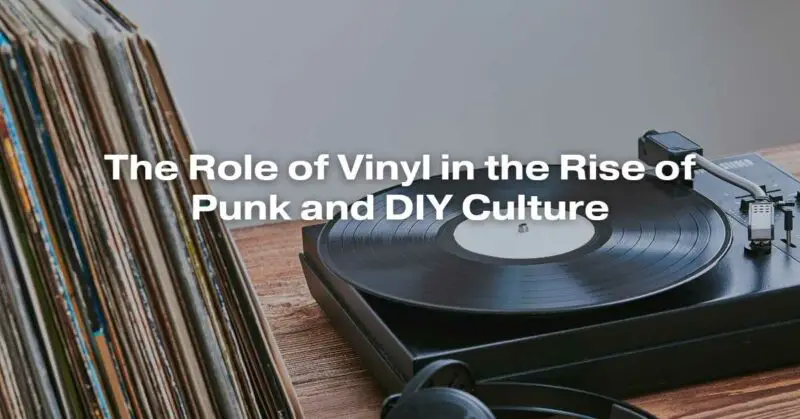The punk movement of the late 1970s marked a turning point in music history. Emerging as a reaction against the excesses of mainstream rock, punk music brought a raw, rebellious energy that resonated with disaffected youth. Central to the rise of punk was the DIY (Do It Yourself) ethos, which rejected the polished production values of mainstream music in favor of a more grassroots, self-reliant approach. In this article, we will explore the pivotal role that vinyl records played in the development of punk and DIY culture, and how they helped shape a movement that continues to influence music and culture today.
The Birth of Punk and DIY Culture
Punk rock was born in the mid-1970s in both New York City and London, with bands like The Ramones and The Sex Pistols leading the charge. These bands rejected the virtuosic technicality of classic rock in favor of simplicity, directness, and a DIY attitude. The punk ethos encouraged anyone to pick up an instrument, start a band, and make their own music, regardless of technical proficiency. It was an expression of anger, frustration, and a desire to challenge the status quo.
Vinyl as the Medium of Rebellion
Vinyl records were the primary medium through which punk music was distributed. At a time when major record labels dominated the music industry, punks embraced the independent, self-released nature of vinyl. The 7-inch single, or “7-inch,” became the format of choice for punk bands. These singles were affordable to produce, enabling even the most underground bands to release their music. Bands would often press their own records or work with small, independent labels, bypassing the major label gatekeepers.
The Cover Art as a Statement
Vinyl records were not just about the music; they were also a canvas for visual expression. Punk bands used the cover art to make bold statements and create a visual identity for their music. The artwork was often provocative, confrontational, and DIY in nature. Bands like the Sex Pistols and The Clash used their album covers to convey their anti-establishment messages, further cementing the connection between vinyl and punk’s rebellious spirit.
Limited Runs and Collectibility
Because many punk records were pressed in limited quantities, they became collector’s items. This scarcity added to the allure of vinyl in the punk scene. Collectors and fans would seek out rare and obscure releases, contributing to the sense of community within the punk subculture. Vinyl records were more than just a means of listening to music; they were physical artifacts that held cultural significance.
DIY Distribution and Promotion
In the pre-internet era, DIY distribution and promotion were essential for punk bands. They relied on fanzines, independent record stores, and word-of-mouth to get their music into the hands of listeners. Bands would often tour relentlessly, selling their records at shows and connecting with fans face-to-face. This direct interaction between bands and their audience fostered a sense of intimacy and authenticity that set punk apart from mainstream music.
The Legacy of Punk and Vinyl
The punk movement of the late 1970s and early 1980s laid the foundation for many subgenres of punk and alternative rock that followed. Bands like Bad Religion, Fugazi, and Operation Ivy continued the tradition of DIY punk, releasing their music on vinyl and embracing the independent spirit.
Today, vinyl records are experiencing a resurgence in popularity, and punk music continues to influence a wide range of genres. The enduring appeal of vinyl lies in its tangible, tactile nature and the connection it fosters between artists and fans. The punk movement’s DIY ethos, closely intertwined with vinyl, has left a lasting legacy, inspiring countless musicians to create music on their own terms.
Conclusion
Vinyl records played a pivotal role in the rise of punk and DIY culture. They provided a medium through which punk bands could release their music independently, make visual statements, and connect with their audience on a personal level. Vinyl’s collectibility and cultural significance have kept it alive in the digital age, and punk’s legacy continues to influence music and culture today. The story of punk and vinyl is a testament to the power of grassroots creativity and the enduring appeal of rebellion against the mainstream.

